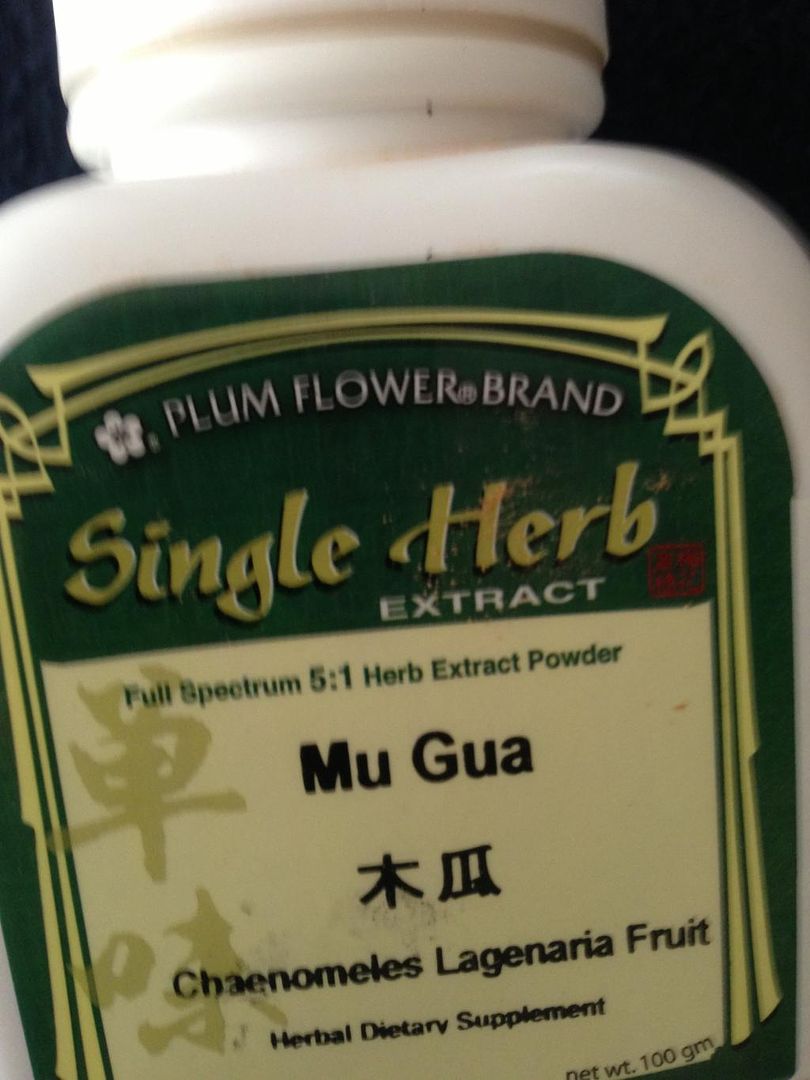Also called Flowering Quince, Japanese Quince, Mu Gua, Sweet Nakai, and Chaenomeles Lagenaria.
From http://www.ncbi.nlm....pubmed/18485464
This means that it is a NDI at that concentration of 1-1000 miligrams per Liter. Not sure it's bioavailability, but typical dosing schedule for normal chinese medicinal herbs is to take 1 gram at 5x strength extract 3x a day. It ends up being about 30 cents a day.Common flowering quince (FQ) is the fruit of Chaenomeles speciosa (Sweet) Nakai. FQ-containing cocktails have been applied to the treatment of neuralgia, migraine, and depression in traditional Chinese medicine. The present study assessed whether FQ is effective in dopamine transporter (DAT) regulation and antiparkinsonism by utilizing in vitro and in vivo assays, respectively. FQ at concentrations of 1-1000 microg/ml concentration-dependently inhibited dopamine uptake by Chinese hamster ovary (CHO) cells stably expressing DAT (D8 cells) and by synaptosomes. FQ had a slight inhibitory action on norepinephrine uptake by CHO cells expressing the norepinephrine transporter and no inhibitory effect on gamma-aminobutyric acid (GABA) uptake by CHO cells expressing GABA transporter-1 or serotonin uptake by the serotonin transporter. A viability assay showed that FQ mitigated 1-methyl-4-phenylpyridinium-induced toxicity in D8 cells. Furthermore, in behavioral studies, FQ alleviated rotational behavior in 6-hydroxydopamine-treated rats and improved deficits in endurance performance in 1-methyl-4-phenyl-1,2,3,6-tetrahydropyridine (MPTP)-treated mice. Furthermore, immunohistochemistry revealed that FQ markedly reduced the loss of tyrosine hydroxylase-positive neurons in the substantia nigra in MPTP-treated mice. In summary, FQ is a selective, potent DAT inhibitor and has antiparkinsonian-like effects that are mediated possibly by DAT suppression. FQ has the potential to be further developed for Parkinson's disease treatment.
From http://www.ncbi.nlm....pubmed/18505483
Tyosinase isn't as high in mammals, but we still have some. It oxidizes (degrades) tyrosine and DOPA, I believe. Anyhow, the study was done to find a whitening agent (melanogenesis inhibitors). I guess it means it keeps me from tanning? I don't know what the relationship between tyrosinase and melanogenesis is... guess there is some... http://onlinelibrary...0604.x/abstract but I don't see that as a bad or a good thing, otherwise I'd be racist. It's just a strange side effect.The aim of this study was to evaluate several plant extracts with a view to developing melanogenesis inhibitors. In this study, 100 plant extracts were screened to elucidate their whitening effects using in vitro inhibition of tyrosinase and DOPA auto-oxidation activity. Several plant extracts such as Chaenomeles speciosa, Dryopteris crassirhizoma, Gastrodia ellata, Glycyrrhiza glabra, Morus alba, Myristica fragrans, Rheum palmatum and Sophora japonica showed inhibition of mushroom tyrosinase activity. Plant extracts including Bupleurum falcatum, Caragana sinica, Morus alba and Tussilago farfara showed inhibition of DOPA auto-oxidation activity.
There are plenty of other studies on the herb. http://www.ncbi.nlm....eles%20speciosa
It's an anti-inflammatory, too.
What do you guys think of this herb as a potential dopaminergic nootropic?
Edited by devinthayer, 15 July 2011 - 07:44 PM.



















































